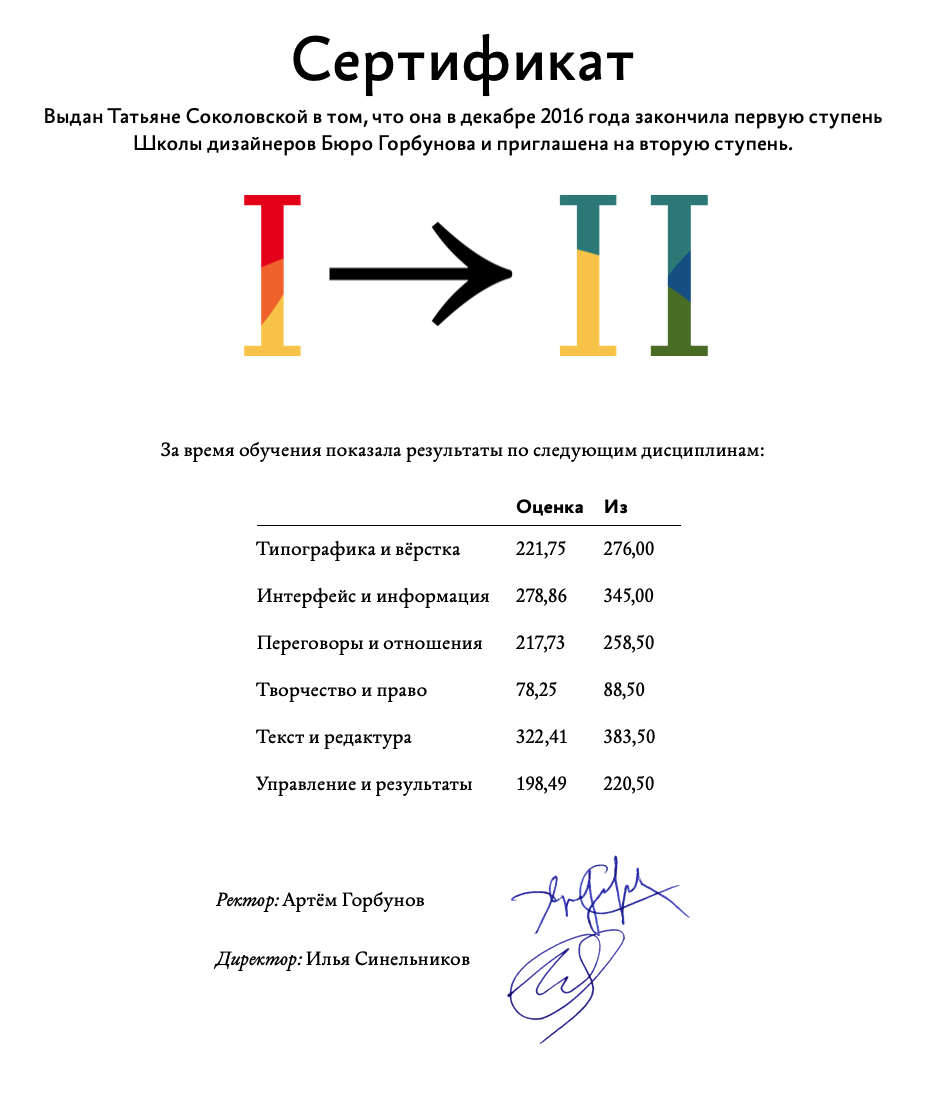Designers School. Stage I — what’s what
Finished the first stage of Designers School. Yay! I want to tell you what it was like, what I liked, what I didn’t, and some advice for incoming students.
I wrote about the second stage.
The Gorbunov Bureau Designers School trains designers in six disciplines: typography and layout, interface and information, negotiation and relationships, design and law, text and editorial, and management and results.
1*T5i73fspnSvqdnV4DxqqQfQ.png
The school is different from other educational institutions: in the first stage, students learn lectures, and take assignments and tests by themselves — teachers do not control the process. No one kicks, demands or leads them by the handle. This approach fosters self-discipline.
On the second stage pass the first 30 students out of 100 according to the rating. If you don’t get enough points, you have to go through the first stage again. Bonus: if you finish the first stage and are not in the top 30, you can take the course again, for a fee, but without the entrance task.
Entry task
Every year the assignment is different: a page for a doctor’s appointment, a page for a car service appointment, and an interface for a pizza-ordering gadget.
Our stream was doing a self-check-in terminal at the airport. I scored 27.78 points and took 54th place in the rating. Now I realise my mistake: I didn’t understand the task completely, I went too deep into details and proposed an improved version of a standard terminal. To get a high score, you need to understand the problem, move away from the existing standards and offer a solution, not an improved design.
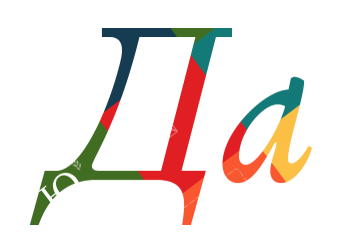
Study
The process of studying is a race and striving to rise in the rankings. Every week you get a portion of lectures, study, take tests, and do assignments. If you fail to meet the deadline three times, you are expelled.
During four months of study, we took 39 tests, 11 practical assignments and a term paper.
Lectures
Lectures in Google Docs. I counted 1092 pages in 10 pins, and most of them are in video format. The volumes are large, and incoming students are advised to read all bureau advice and the required reading book list on the school page before studying.
Additionally, read:
- Ilyakhov’s Tips
- Ilyakhov’s Blog
- Birman’s Blog
- Sarycheva’s Blog
- Toverovsky’s Blog)
- Check out Maxim Ilyakhov’s webinars
- And subscribe to Glavreda’s newsletter.
Out of 84 students, 15 were expelled — someone failed to meet the deadline three times, and someone did not manage the volumes and left on his own.
It’s hard to combine work and study.
I liked that all lectures are based on real examples. The lecturers give the theory and immediately show the application.
Tests
Tests among students caused a lot of resentment. The questions are generally based on the lectures, but some break your brain. Often you come across the subjective opinion of the teacher, with which you do not always agree. It has happened that you are sure of the correct answer, but as a result, the question is not valid. You can ask the teacher to point out mistakes, but they will only guide you — they will not tell you the right answer, and may not even answer the letter at all. Students are not allowed to discuss tests among themselves. Everyone was digging to the extent of their interest.
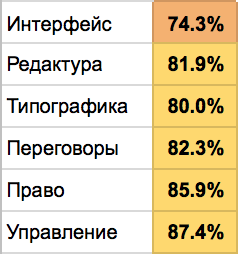
I took the tests in two stages: I took the test the first time, then studied the lecture and took it again a day or two later, after which I took the test. I advise you to check the third time too. Sometimes I made silly mistakes due to inattention.
I liked the fact that the tests are different from the usual ones, which I took in lectures and forgot. They are constructed in such a way that I had to reread lectures and books, think and analyse, after which the material was absorbed into my brain with a dead grip.
I did not like that there was no feedback at all. Sometimes I wanted to discuss, ask questions and get answers.
Practical assignments
We drew knowledge octopus, made a growth plan for the year and kept a diary of tasks. Edited finished text, wrote the text for a promotional page and prepared an article for print. Improved forms, tables and graphs. Conducted negotiations.
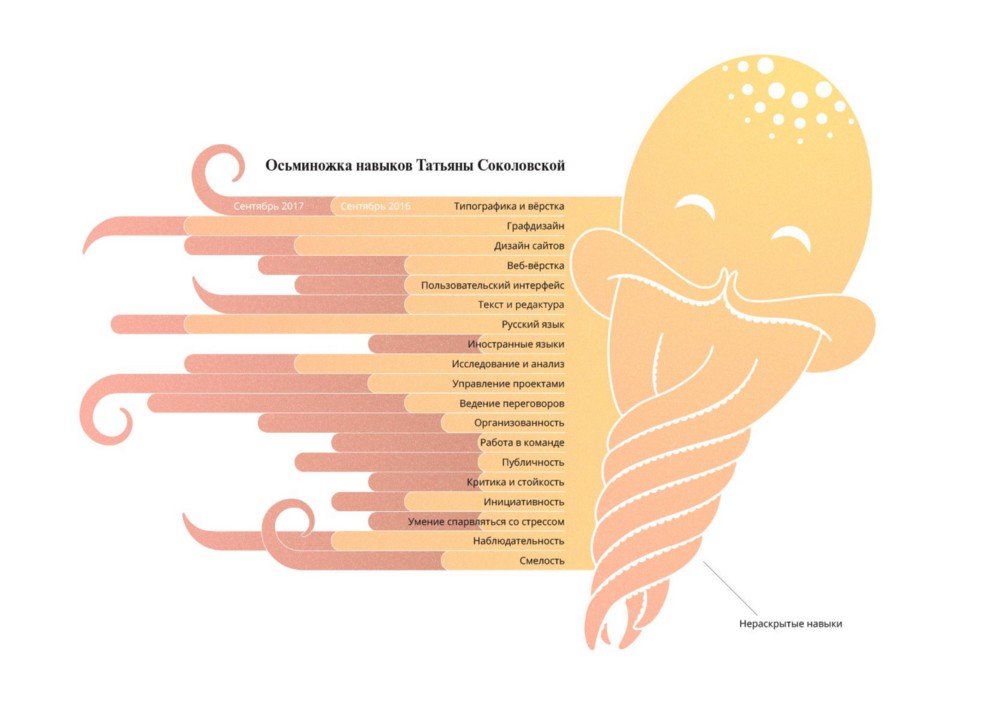


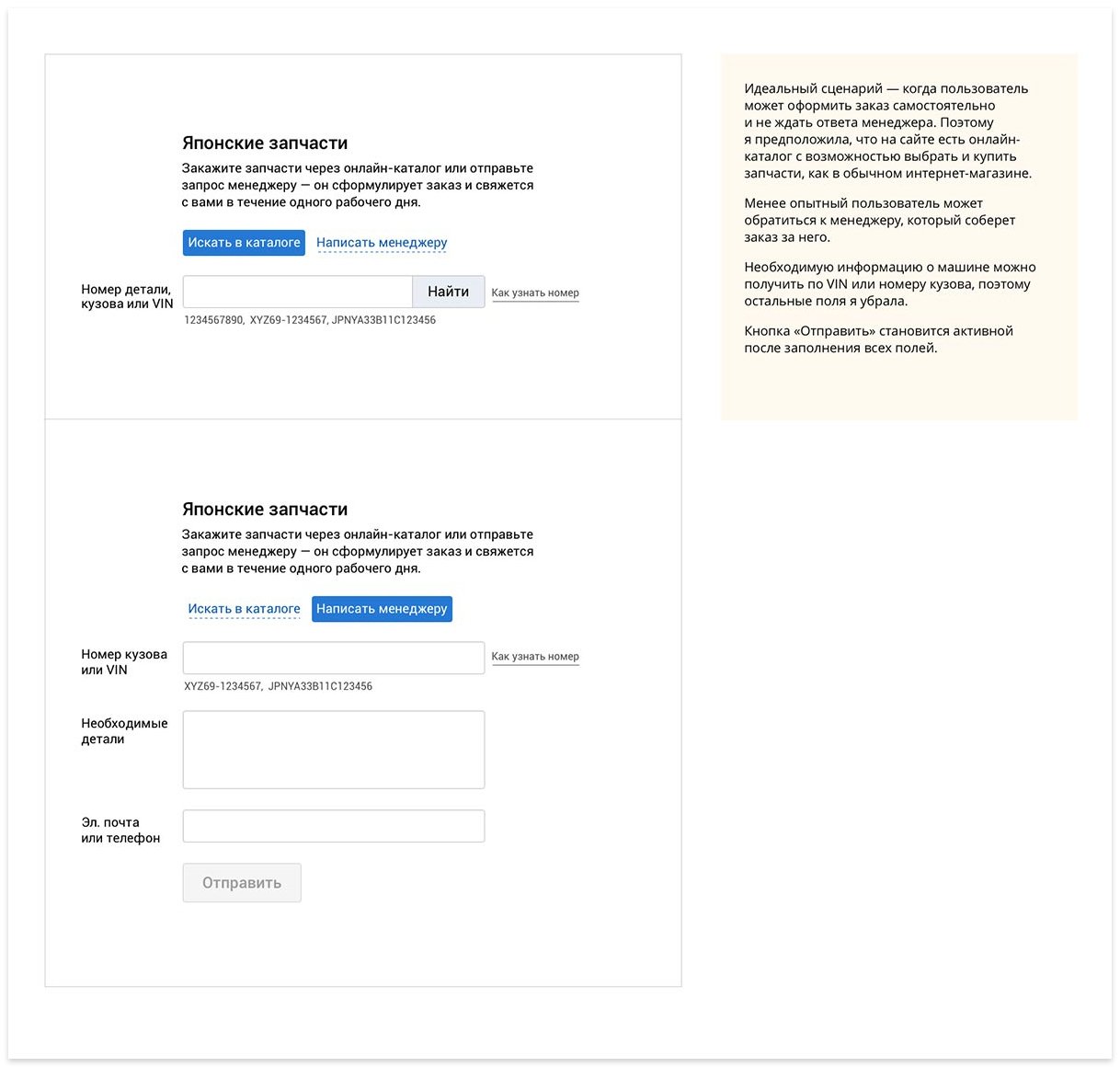
Now I look at my octopus and realise that I underestimated in some places and overestimated in others :-) I’ll have to make a new one
And here is the editing task — I had to choose one of the proposed articles, edit it and prepare it for printing:


Negotiation seemed to be the most difficult assignment for me. We were divided into pairs and given roles.
Prepare for the negotiation in advance, think through all possible scenarios and prepare a couple of proposals to solve the problem. Rehearse a few times, write down the questions and follow Camp’s “commandments”: be out of order, in the client’s world, show care, weed the fishing line and don’t be needy. I watched all the clips of fellow students — you can immediately see who prepared for the negotiation and who didn’t.
Negotiations get 50 points. In our stream, no one got the maximum. Three students got 47.5 points, I got 46.7 points, others got 45.8 and below. A renegotiation is a real chance to move up in the rankings.
Failure is negotiation without resolution or being taken to court. Be prepared for anything from your partner — there have been cases when your partner shouted and threw paper at the camera. Of course, such behaviour is a failure, but the right reaction and response can save your grade.
In fact, it didn’t go as badly as I thought it would :-))
The assignments were graded by deadline: if you were on time, you got a full grade, if you were not on time, you got half a grade. One of the assignments on editing and negotiation was graded by the students themselves — they checked each other, and the instructor adjusted the score if he/she thought it was necessary.
Take the assignments seriously, even if the instructor does not grade the work, it is a great experience. Study the work of previous streams, and learn from their mistakes.
Liked that designers have enough editing assignments as well.
Didn’t like that the papers were graded by a deadline. It didn’t matter how much time you spent and how you did the work, everyone was evaluated the same way — if you made it on time, you got the maximum. There was a lack of practical assignments. I understand that the second stage is focused on practice and feedback from the teacher, but after the theory, I wanted assignments in addition to tests. Assignments with grades and comments at least from fellow students would have been even more useful.
Coursework
Coursework gives 150 points — this is a lot, for tests 3–5 times less. Therefore, coursework can greatly affect the position in the ranking.
In a fortnight you need to draw the main page of the site of plastic windows. Without inventing anything, just draw a strong layout. Assignment on the discipline “Interfaces and information”, but also take into account other subjects: texts in infostyle, layout on lectures. Remember usefulness and convenience.
I won’t say exactly how much time I spent on the assignment, I think about 12–15 hours. I started working on the layout in the second week, my eye quickly became blurry, but I didn’t have time to put the layout aside. Now I see mistakes I didn’t see before. So don’t put it off until the last week. Start doing the coursework right away so that you have a chance to rest from it and finish it with new strength and fresh eyes.
I liked that they gave a real project as a basis and I didn’t have to invent anything.
Disliked, that there was no opportunity to discuss details and ask questions about the work, as it would be with a real client.
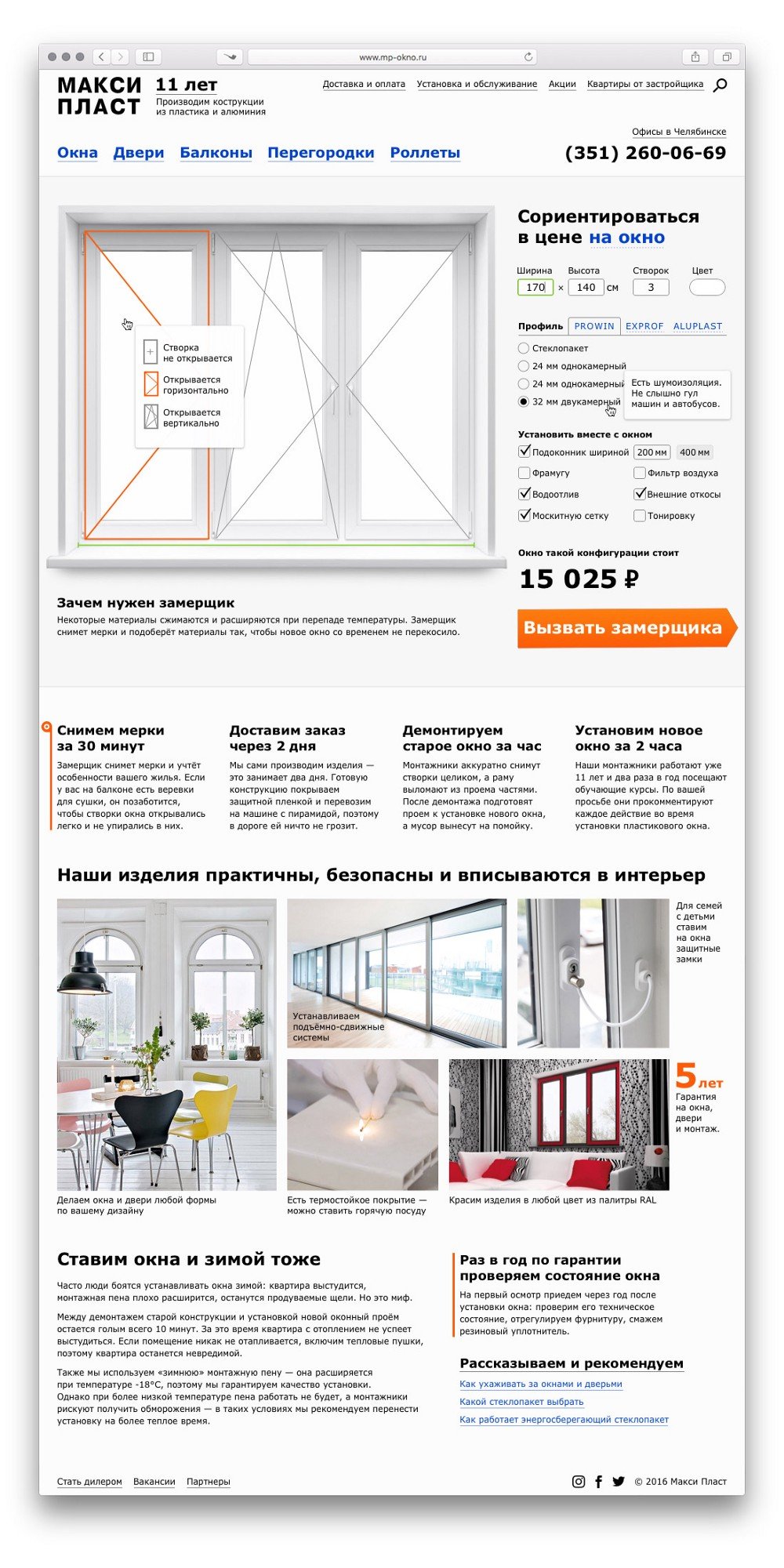
Ranking
I started the study at 54th place and climbed into the top 2 after the first week. I floated between 16th place and 28th for 3.5 months and graduated in 17th place.
If you want to continue studying, the main thing is not to fall out of the top 30 — it will be harder to get back in every week. If you pass the tests with an average of 75–85%, you can get ahead only in negotiations and coursework.
I like this rating system. It encourages you to study and get ahead. Some think otherwise, there were comments and dissatisfied students.
Benefits
I saw the benefits for me already in the first month of the course:
- You don’t have to search for information, everything is given ready-made and by topic.
- There is access to video lectures of courses that cost 20–40 thousand rubles for each discipline.
- Tests help you assimilate information better than reading a lecture or a book twice.
- If desired, you can get help or feedback from other students.
- The school teaches not only design, but also client relations, project management, text editing, and legal law. Before the training, I lacked this knowledge.
- The trainee school produces independent designers who solve problems and take care of the client, draw layouts and edit text, negotiate and deliver projects on time, draw up contracts and know the law in the design field. It teaches how to overcome difficulties, plan work and grow professionally.
The school is for those who want to learn.
And I will continue in the second step :-)
1*bzaDZHXOmw1K3PmTmSgQrA.png.
The second stage starts on the 9th of January
Thanks to Artyom Gorbunov, Ilya Birman, Maxim Ilyakhov, Ilya Sinelnikov, Nikolay Toverovsky, and Vladimir Belyaev for their love of their work, and for the desire to develop and share knowledge.

